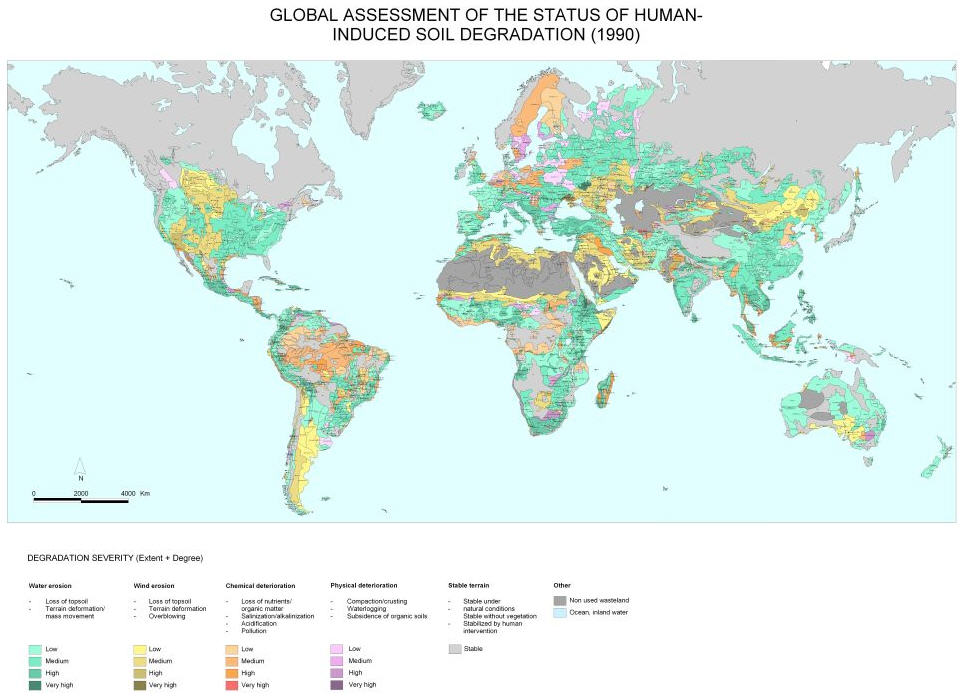State of the soil
The state of the soil is critical to human and plant health and to food security – with benefits including supplying nutrients and water to crops and act as buffers against nutrient loss and pollution. Grassland soils, in particular, also act as carbon reservoirs.

Soil is also a finite natural resource, which is both unequally distributed around the world, and highly sensitive to mismanagement.
Although human behaviour has been affecting soil for millennia significant negative impacts have been observed since the Industrial Revolution and have become particularly prevalent since the 1950s.
Soils are affected by many things, including over- intensive production methods, water (its scarcity or excess or salinity), deforestation, desertification and land degradation.
Types of soil degradation include water and wind erosion, as well as chemical and physical deterioration.